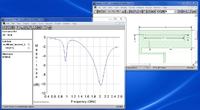ferdinnand
Junior Member level 3
Hi all,
I seek your help to clear up some issues that have been recently occupying my mind. I was discussing with someone about antenna impedance mismatch and at some point it came to this idea: would it result in the same way if we used one antenna with high SWR and high gain, and another antenna with good SWR but has lower gain, just low enough so that both antennas produce same EIRP when attached to the same transceiver.
Let me explain in other words: speaking of digital communications, (GSM, WLAN, etc.) suppose we have designed a lousy antenna with very high reflection coefficient (S11= -3dB) and it has a gain of 9 dBi. On the other hand, suppose we have designed a proper antenna with a good reflection coefficient (S11< -30dB or so) and has a gain of 6 dBi. Can those two antennas operate having exactly the same performance? My prompt response was that it was a ridiculous idea to think that way. But then I couldn't find out how an antenna with such high reflection would influence the quality of digital communications. Surely it would increase SWR at the transceiver but I am not sure whether or not excess noise is produced by those standing waves.
Long story short, I cannot argue against this plain logic: Antenna1 is fed with 10mW, 5mW is reflected, 5mW is radiated= 7 dBm and EIRP= 7+9=16dBm. Antenna2 is fed with 10mW, almost all radiated, EIRP= 10+6=16dBm. If the math is correct, then what is the advantage of low SWR?
Could you please enlighten me? Thank you.
I seek your help to clear up some issues that have been recently occupying my mind. I was discussing with someone about antenna impedance mismatch and at some point it came to this idea: would it result in the same way if we used one antenna with high SWR and high gain, and another antenna with good SWR but has lower gain, just low enough so that both antennas produce same EIRP when attached to the same transceiver.
Let me explain in other words: speaking of digital communications, (GSM, WLAN, etc.) suppose we have designed a lousy antenna with very high reflection coefficient (S11= -3dB) and it has a gain of 9 dBi. On the other hand, suppose we have designed a proper antenna with a good reflection coefficient (S11< -30dB or so) and has a gain of 6 dBi. Can those two antennas operate having exactly the same performance? My prompt response was that it was a ridiculous idea to think that way. But then I couldn't find out how an antenna with such high reflection would influence the quality of digital communications. Surely it would increase SWR at the transceiver but I am not sure whether or not excess noise is produced by those standing waves.
Long story short, I cannot argue against this plain logic: Antenna1 is fed with 10mW, 5mW is reflected, 5mW is radiated= 7 dBm and EIRP= 7+9=16dBm. Antenna2 is fed with 10mW, almost all radiated, EIRP= 10+6=16dBm. If the math is correct, then what is the advantage of low SWR?
Could you please enlighten me? Thank you.
